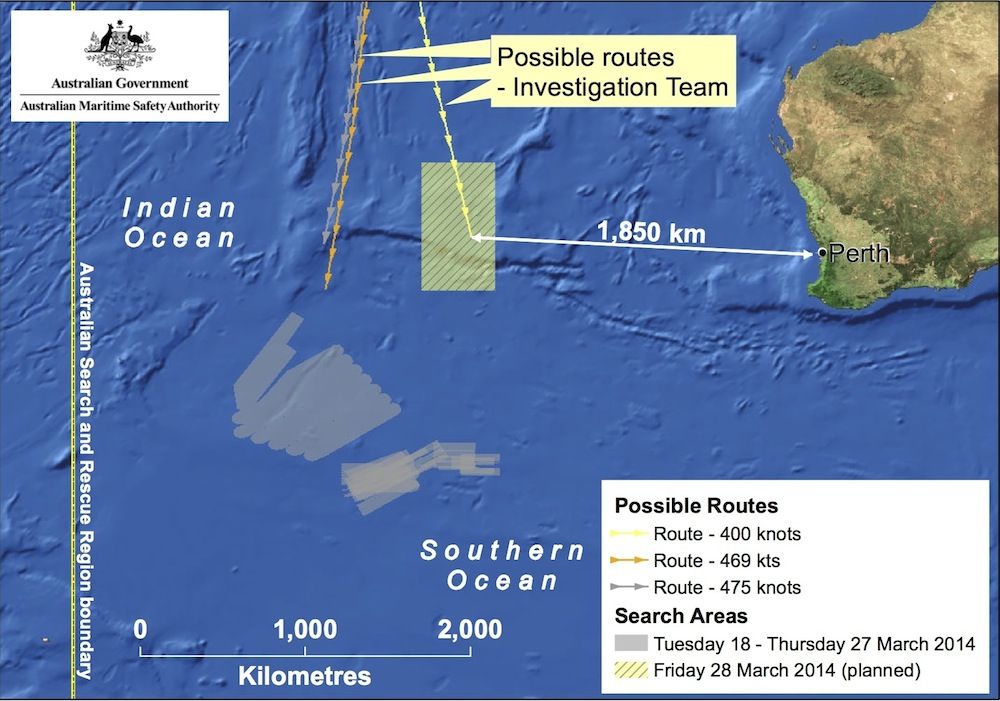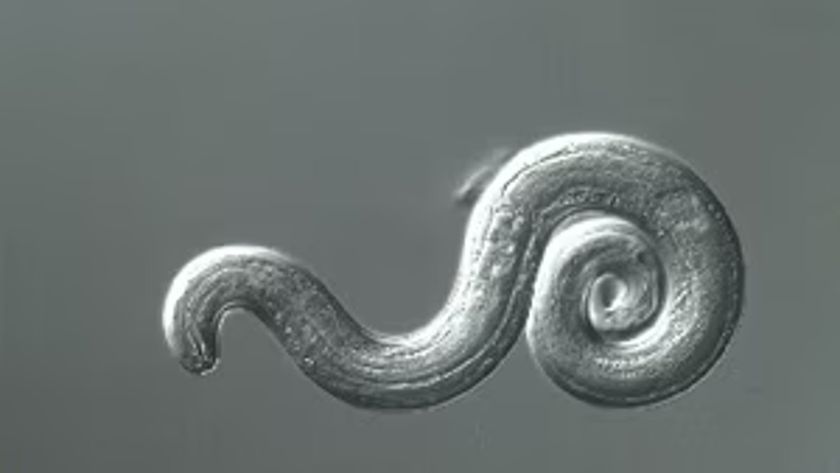Flight 370: Oil in Indian Ocean Not from Missing Jetliner

The ongoing search for the missing Malaysia Airlines jetliner has suffered yet another setback, as officials confirmed today (April 17) that an oil slick discovered earlier this week in the southern Indian Ocean did not come from the plane.
An Australian ship, called Ocean Shield, spotted the slick on Sunday (April 13), and investigators collected a sample of the water to try to determine the oil's origin.
"Preliminary analysis of the sample collected by [Australian Defense Vessel] Ocean Shield has confirmed that it is not aircraft engine oil or hydraulic fuel," officials from Australia's Joint Agency Coordination Center, which is overseeing the search operations, said in a statement. [Malaysia Flight 370: Facts and Timeline]
Investigators have been using an unmanned submarine, called Bluefin-21, to scan the ocean floor for signs of debris or wreckage. The robotic subs are capable of reaching depths of 14,000 feet (4,270 meters), but the vehicle's operators now say there is a "small but acceptable level of risk" in deploying the Bluefin-21 deeper than 14,700 feet (4,500 m), which would enable the sub to explore the deepest parts of the ocean within the designated search area.
"This expansion of the operating parameters allows the Bluefin-21 to search the seafloor within the predicted limits of the current search area," Joint Agency Coordination Center officials said in a statement.
The Bluefin-21 submarine completed its first full underwater search mission today, scanning 35 square miles (90 square kilometers) of the ocean floor, reported Bloomberg. The data retrieved by the vehicle will be used to build a 3D sonar underwater map.
Two previous attempts to deploy the Bluefin-21 were cut short due to technical problems, according to Bloomberg.
Sign up for the Live Science daily newsletter now
Get the world’s most fascinating discoveries delivered straight to your inbox.
Investigators say search efforts will continue through the weekend, and several ships and airplanes will continue looking for clues while supporting underwater operations.
The designated search area for the missing Malaysia Airlines Flight MH370 has also been narrowed, based on several signals detected last week that are thought to have come from the plane's black box.
"This analysis has allowed the definition of a reduced and more focused underwater search area," Joint Agency Coordination Center officials said in a statement. "This represents the best lead we have in relation to [the] missing flight MH370 and where the current underwater search efforts are being pursued to their completion so we can either confirm or discount the area as the final resting place of MH370."
The Malaysia Airlines jet has been missing since March 8, when it mysteriously disappeared during a flight from Kuala Lumpur to Beijing. So far, investigators have spent more than 40 days searching for clues about the fate of the plane and the 239 people onboard.
Follow Denise Chow on Twitter @denisechow. Follow Live Science @livescience, Facebook & Google+. Original article on Live Science.

Denise Chow was the assistant managing editor at Live Science before moving to NBC News as a science reporter, where she focuses on general science and climate change. Before joining the Live Science team in 2013, she spent two years as a staff writer for Space.com, writing about rocket launches and covering NASA's final three space shuttle missions. A Canadian transplant, Denise has a bachelor's degree from the University of Toronto, and a master's degree in journalism from New York University.


